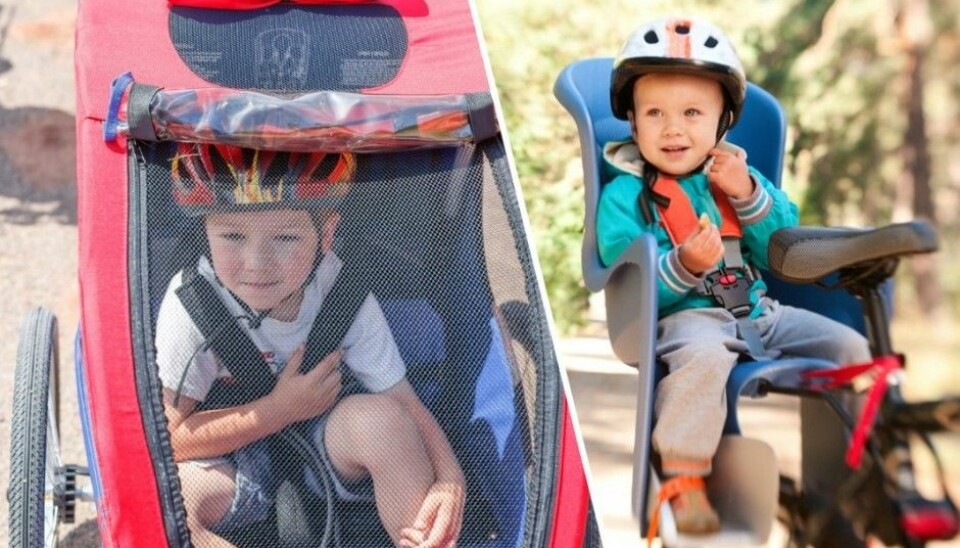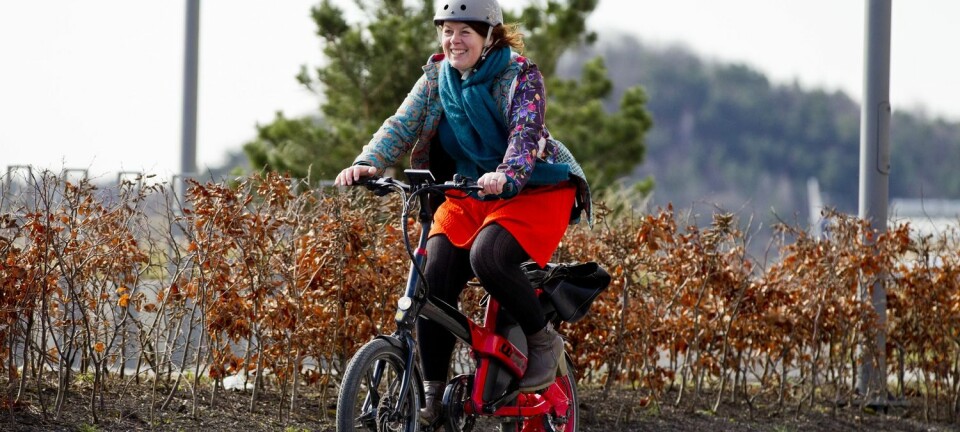
Are kids safer in a child seat or a bike trailer?
Where you choose to cycle, your expertise and your weight – all these factors count with regard to the safety in riding a bicycle with a child as a passenger.
Few small children are injured in bike accidents in Norway. While two too many, according to Statistics Norway, only two kids under the age of six were killed in bicycle accidents in the years 2000 – 2014. Thirteen were severely injured and 72 lightly injured in the same 15 years.
“So few cyclists carry a child on their bike that fortunately few accidents are seen,” says Research Manager Alena Høye at the Norwegian Centre of Transport Research (TØI).
“This makes it hard to say much about the risk of accidents,” she says.
Høye has looked into the research available on child transport on bicycles and found very little.
Yet there are general laws of physics to consider when choosing between child seats or trailing child carriers.
Height over the road
“In general, child trailers do not tip over so easily. And when they do the child is well protected if they have a helmet and are belted in,” says Høye.
On the other hand, the distance to the asphalt from a child seat structure behind mum or dad is greater. A fall entails more impact. ScienceNordic’s Norwegian partner forskning.no has previously written that smaller children are the most prone to suffer head injuries in bike accidents.
But Høye is not recommending a trailer in every location.
“Child trailers are very safe if you ride on sidewalks or bike tracks where there are no cars. But as soon as you get on a road you risk trailers being overlooked because they are so low,” says Høye.
Australian researchers warned about this danger after investigating the variaties of child passenger transport on bicycles.
Weight of the rider
When child seats are used, the mass of the person doing the pedalling is a big factor. A tall man weighing 90kg will not be impacted by the extra weight as much as a woman weighing 50kg.
“The heavier the cyclist the easier it is to maintain one’s balance with a kid on the rear seat,” explains Høye.
The child and the seat comprise a larger share of the total weight if the cyclist is small and light. The child is perched high up and this too decreases the balance.
“The higher the weight is off the ground, the less stability,” explains the TØI researcher.
An electric powered bike with a low-placed battery can compensate somewhat for this. The centre of gravity is lowered and the bike manoeuvres better.
Brakes helmets and belts
Høye wishes to remind adults that whether we opt for bike seats or trailers when transporting kids we mustn’t ignore the essentials.
“Kids have to be tightly secured with seatbelts and wear helmets. This applies to trailers too, even though they might seem safe enough as they are,” she says.
Brakes are important too.
“It gets harder to slow down when you have a passenger,” says Høye.
-------------------------------------
Read the Norwegian version of this article at forskning.no
Translated by: Glenn Ostling
Scientific links
- [In Norwegian:] Høye et al.: Trafikksikkerhetshåndboken. TØI, 2012.
- Raftery et al.: Transportation of children with bicycle seats, trailers, and other carriers: considerations for safety. Report from the Centre for Automotive Safety Research, 2016.































